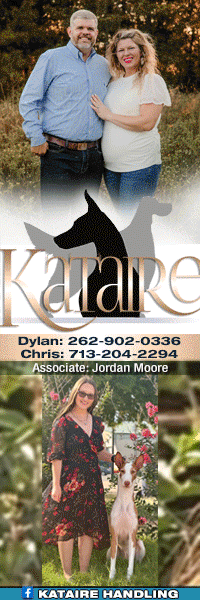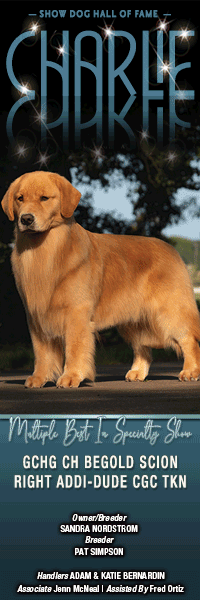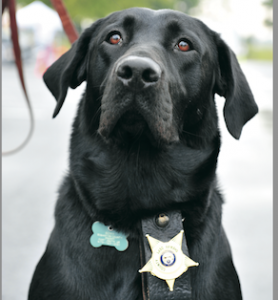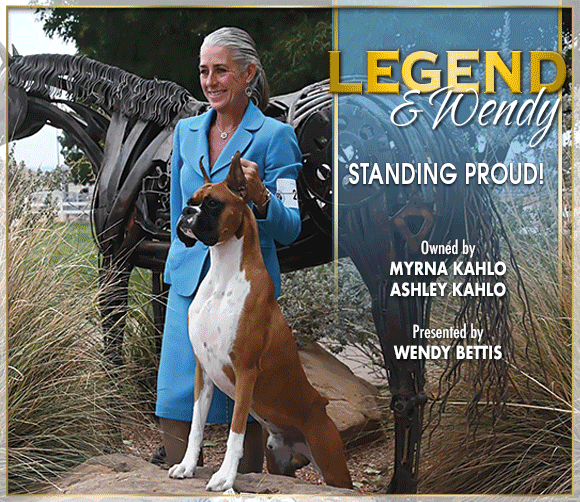Detection Dogs
Fine-tuned by millions of years of evolution, the canine olfactory system qualifies as a work of art
Although we’ve relied on canine companionship, cleverness, and instinctive behavior since prehistory, we are just beginning to comprehend the full extent of their sensory powers. We recognize that a dog’s hardwired drives are filtered through the lens of its intelligence and emotion. Mounting scientific evidence confirms that dogs constantly moderate their innate behavior in response to new information in their environment. Recently, the legal world also weighed in on this discussion with a landmark decision. We are all familiar with the perils of human error on the job. Now, the Supreme Court ruled that working detection dogs also deserve some leeway.
On February 19, in the landmark case of Florida vs. Harris, the court unanimously overturned a Florida Supreme Court decision prompted by Aldo, a drug detection German Shepherd. I’ll spare you the details of this convoluted seven year legal battle. Briefly, here’s what went down.
On June 24, 2006, Liberty County, Florida Sheriff William Wheetley stopped Clayton Harris’s truck for expired tags and noticed an open beer can in the cup holder. Because of Harris’s nervous demeanor Wheetley requested to search his truck. Harris refused. Wheetley then sent his drug detection dog Aldo to sniff the truck. Aldo had been a certified drug detection dog for two years, Wheetley had personally trained him at a forty-hour program, and they had been partners for one year.
Aldo alerted, so Wheetley searched Harris’s truck and discovered pseudoephedrine pills, muratic acid, and other components of meth. Harris was arrested and charged with possession of these substances with the intent to use them to make methamphetamine. After his arrest, it was confirmed that Harris was cooking and using meth.
Two months later, while out on bail, Wheetley again stopped Harris for a broken brake light. Again, Wheetley walked Aldo around the car, and he alerted. However, this search turned up nothing. Although the Fourth Amendment protects individuals from unreasonable search and seizure, the Supreme Court has consistently held that warrants are unnecessary to search if there is probable cause. And most courts agree that a detection dog alert qualifies as probable cause.
In Florida Circuit Court Harris moved to suppress the evidence recovered during the initial search. He contended that Aldo was an unreliable drug-detection dog; therefore Wheetley did not have probable cause to conduct the search. It’s true that Aldo came up cold in the second search, but he was trained and certified to detect that particular drug.
Harris’s defense team argued that certification wasn’t sufficient to establish Aldo’s reliability due to the lack of uniform standards for training and evaluating detection dogs. Therefore, the likelihood of searches prompted by poorly trained dogs jeopardizes Fourth Amendment rights. They wanted Aldo’s reliability to be proven in court. Wheetley did not keep records of Aldo’s work in the field and admitted that he might have alerted to residual odors in Harris’s truck during the second search. But he was unable to provide a detailed explanation of this phenomenon. The trial court held that Wheetley had probable cause for the search a based on the totality of the circumstances; expired tags, open beer can, Harris’s behavior, and Aldo’s alert. The Florida First District Court of Appeals affirmed the lower court’s decision.
The Florida Supreme Court reversed it, holding that the prosecution did not meet its burden of proof to establish probable cause for the search. Therefore, evidence recovered pursuant to the search should have been suppressed. They also decided that prosecutors must present detailed evidence of a detection dog’s training and certification, satisfactory field performance records, and evidence of the officer’s experience training and handling detection dogs in order to establish probable cause in future cases of this nature. In reaching this result, the court developed a test for probable cause in such cases and clarified the circumstances under which an alert by a trained drug-detection dog justifies searching of a vehicle.
By this time, the hot button issues raised in this case were gaining national attention from groups ranging from NORML (the National Organization for the Reform of Marijuana Laws) to NACDL (the National Association of Criminal Defense Lawyers). NACDL noted that detection dog handlers often approach vehicles with preconceived expectations, which can influence the dog’s reaction. The Rutherford Institute argued that the documented error rate and potential for handler cueing gives law enforcement officials unfettered discretion to conduct searches based on detection dog alerts.
The Fourth Amendment states: The right of the people to be secure in their persons, houses, papers, and effects, against unreasonable searches and seizures, shall not be violated, and no Warrants shall issue, but upon probable cause, supported by oath or affirmation, and particularly describing the place to be searched, and the persons or things to be seized.
It protects individuals from unreasonable searches and seizures, but it does not demand certainty of success to justify a search or forbid all searches and/or seizures, only those deemed unreasonable… and that was the issue at the center of this legal wrangling.
So it went all the way to the Supreme Court where they overturned the ruling. Writing for a unanimous court, Justice Elena Kagan said that proper training and certification of the dog — rather than an inflexible performance checklist was sufficient for the dog’s alert to qualify as probable cause to search a vehicle. The Supreme Court supported the lower court’s decision and emphasized that demanding substantial, detailed records to prove a detection dog’s expertise imposes an undue burden on law enforcement. Kagan noted that this did not prevent defense lawyers from presenting concerns about a dog’s qualifications when necessary.
She also emphasized that the Florida Supreme Court’s decision was at odds with previous U.S. Supreme Court rulings on this subject. This wasn’t the first time that detection dog performance has been reviewed by the Supreme Court. Their ruling in the case of Illinois v. Caballes in 2005 qualified as a groundbreaking decision. The Court confirmed that detection dog searches can be conducted at any routine traffic stop. Any resulting discovery of illegal substances did not qualify as an unconstitutional search and seizure. The Court reasoned that defendants had no legitimate reasons to possess these substances and a dog’s alert simply revealed its location.
Although this recent Supreme Court decision was unanimous and had plenty of legal precedent, it remains extremely controversial. It has fueled longstanding debates regarding the legality of warrantless searches based on probable cause. It sets the stage for potential intrusions into many areas of our lives that we consider personal and secure, such as electronic privacy. Some critics have labeled the Aldo decision as the emergence of an American police state. Let’s hope not, but it does raise valid questions regarding expectations of privacy and the legality of warrantless searches- and these questions are multiplying.
Since 9/11, the dog detection business has skyrocketed. They are utilized in more areas of security and law enforcement than ever before. We are familiar with dogs trained to find human remains, drugs, and explosives. But they are also being used to detect contraband ranging from mobile phones to bootleg DVDs. Detection dogs are also proving useful to detect mold, termites, bedbugs, invasive animal species, and medical conditions. Training and certification programs abound and the parameters of the canine detection business are likely to keep expanding.
One thing is for sure. This recent Supreme Court decision gives law enforcement more leeway to conduct searches based on probable cause. The growing acceptance of this practice could theoretically expand from checking cars at airports and traffic stops to investigating the perimeters of homes in high crime neighborhoods, and entire crowds gathered for certain events. This may add up to more effective law enforcement and better overall security. The other side of the coin would be inevitable unjustified searches of innocent people. We are all getting pretty used to this kind of demeaning, intrusive treatment at airports. But it could become much more far reaching and substantially infringe on our Fourth Amendment rights.
A detection dog’s reaction during a search can have four outcomes. It can accurately identify concealed contraband; fail to respond when no contraband is detected, fail to detect concealed contraband, known as a false negative, or wrongly alert when no contraband is present – a false positive.
And I can assure you the last one happens pretty often. I’ve had plenty of experience with detection dogs during my trips through customs. Beagles, Mals, GSD, they all love me. Passengers stampeding off of interminable international flights often fail to notice them stationed discreetly on the skyway. But I always look – because invariably, they sit down when I walk by. This flags you for another inspection after you pick up your luggage. Those dogs are stationed in visible locations calculated to put passengers on guard. This helps customs officials spot nervous behavior, which also gets flagged regardless of the dog’s reaction. Needless to say, my luggage is always searched. I suspect that this is because most of my trips are dog related. I usually attend dog shows, stay with dog friends, and visit breeders. Dogs detect faint traces of my travels long after the fact.
A friend of mine had a more disturbing encounter with a detection dog back in 2002. British police had begun stepping up routine security in the wake of 9/11. That day, he escorted his wife to London to catch a train. She later recounted the incident, which began with her plans to take a bitch up to Cambridge for breeding – and it was in full season that day. “Ray came up to London with us, and put us on the train. He saw us off and went to Tottenham Court Road station to get the train home. There, he saw a police officer with a German Shepherd Dog, and Ray being Ray, he went over to make a fuss of the dog… can you believe that?”
This drug detection dog became very interested in Ray. Its handler interpreted its persistent sniffing as an alert, and Ray was promptly taken into custody, searched, and questioned. His wife says, “My poor middle aged husband was mortified. The search turned up no drugs, and he explained to the police officers that he loved dogs, that he had dogs of his own, and had just waved one off to be mated. He has never told me what the police officers said. But he was given a copy of their report and the officer’s statement, and was so annoyed that the officer wrote ‘grey hair’ in his description of the suspect!” Although mortifying, this incident only delayed Ray’s trip home and provided a lesson on why you shouldn’t pet police dogs.
A false positive alert to the scent of a bitch in season led to the 1981 case Doe vs. Renfrow. On March 23, 1979 Highland Junior High School officials arranged an unannounced drug sweep of the school by Highland, Indiana Police using 14 drug detection dogs. One dog’s persistent attention resulted in a 13 year-old girl being detained, searched, questioned, and finally strip searched to no avail. Her only explanation for the dog’s behavior was that her dog was in heat that day. Not surprisingly, the girl’s family sued the school, the Highland Police Chief, and the trainer of the dogs used in the search. The upshot of this lengthy legal debate was that everything except the strip-search was constitutionally valid.
Legally, detection dog alerts generally constitute probable cause regardless of other factors. And the recent Supreme Court decision emphasized that dogs don’t need to be 100 percent reliable to confirm their ability. But reliable is a subjective term. Standardized training and certification methods for detection dogs are not legally established. Most police departments rate their detection dogs as 60-90 percent accurate. But even that estimate is open to interpretation. Alerting to a closely related substance looks good from a training standpoint, in terms of civil rights it is another ball game.
Private organizations utilize different training methods, and devise their own requirements for each certification program. These can vary drastically, and as we know, dogs don’t respond uniformly to training. Techniques must be tailored to a dog’s individual temperament and natural abilities. And spiraling demand in an unregulated industry invites substandard results.
New York has been in the grip of bedbug hysteria for several years, and this has become one of the fastest growing areas of the detection dog business. Despite $10, 000+ price tags, extermination companies face long waiting lists to purchase trained bedbug detection dogs. According to a November 2010 article in The New York Times complaints from dissatisfied customers seem to be soaring in tandem with this demand.
“While many dog companies advertise an accuracy rate of 95 percent to 98 percent, that figure is taken from a 2008 clinical trial conducted under controlled conditions by an entomology team at the University of Florida. Their findings do not necessarily reflect the success rate of individual companies’ dogs, operating in the real world with a lot more variables. Dog experts say false positives can result from the poor training of a dog or its handler. The dog might detect a different type of insect. Or the dog could be reacting to a cue from its handler, be it accidental, like reaching for a treat to reward the dog, or, more ominously, on purpose.”
That was a popular scam in the exterminating business long before detection dogs entered the picture. “Outside of police trained detection dogs, I doubt that there are regulations or certifications in place,” says Diller. “ As you know, the dog training business always includes a whole lot of hype!”
He also notes that, “Cost on average depend on how many scents the dog is trained for. They can run $10, 000 or more.” A top explosives detection dog can cost $25,000. Needless to say, a dog with a $25k price tag should come with ironclad credentials. And law enforcement agencies have substantial incentive to ensure the accuracy of their detection dogs. False positive or negative alerts allow illegal activity to go undetected, waste time; exacerbate the inherent dangers of searches, and can lead to suppression hearings and lawsuits. There is also a legal basis for the idea that a search that does not yield contraband is not a false alert, merely an unconfirmed one, and therefore shouldn’t negatively impact a dog’s performance record.
Dogs may play dumb when you want to know who peed on the rug or stole the roast, but when it comes to smells, they know their stuff. Although it’s been refined in some breeds, every dog comes equipped with this miraculous power. “Scent work is a dog’s work and more breeds than not are capable,” says Diller.
I can personally attest to the average dog’s remarkable olfactory ability. My sister died four years ago and I am still unpacking her belongings that were boxed and sealed after her death. And I still have one of her dogs. It’s never been trained to track, and its eclectic ancestry suggests no exceptional ability in that area. Nor does it have any idea what’s going on when I unseal one of those boxes. Regardless of all that, it predictably goes berserk. My only explanation is that it detects the lingering scent of its beloved owner as soon as that box is opened.
Dogs possess impressive olfactory capabilities tailor made for detection work. They can discern faint traces of scents, easily sort and identify daunting concoctions of scents, and detect odor molecules concealed by mud, water, or concrete. Their exquisite sensitivity also explains why they alert to substances that are long gone. This fact may be the biggest training challenge in detection work. Despite these issues, they remain the best technology available for scent detection work. After 12 years and millions of dollars, the Pentagon’s Defense Advanced Research Projects Agency confirmed that canine scent receptors are far more sensitive and reliable than any technology yet devised.
Military and law enforcement agencies have relied on detection dogs for more than a century. But until recently, little research has been done to establish the biological and behavioral processes responsible for their olfactory capabilities – or its potential impact on training protocols. Since 1989, scientists at Auburn University’s Institute for Biological Detection Systems have been unraveling the longstanding mysteries of detection dog work. This subsidiary of Auburn’s School of Veterinary Medicine is considered the premier source for technologically and behaviorally sophisticated detection dog training methodology. IBDS research has been integrated into Auburn’s Detection Canine Training Program to produce top notch detection dogs for federal, state, and local agencies. They also provide courses in all aspects of detection work for dog/handler teams at their center.
Auburn’s research has documented the parameters of canine olfactory sensitivity, which ranges from detecting molecules from ten parts per billion, (the equivalent of ten drops diluted in 50 liters) to 500 parts per trillion (The equivalent of 500 drops diluted in 20 Olympic-size swimming pools). In other words, dogs detect substances in dimensionless rather than measurable concentrations. They alert to low concentrations at the periphery of the target substance, usually referred to as vapor plumes.
Their research has also established that dogs learn to recognize particular details of a scent, rather than identifying the overall substance. Unlike us, dogs don’t enter a room, sniff, and wonder if somebody’s been smoking weed in here. They notice specific chemical compounds of that substance. Think of it this way. Clifford the Big Red Dog is unique in many ways. You would never mistake him for an Airedale or a Pom. If you were making a quick search for Clifford… big and red might be your key priorities. But you might also focus on his long, floppy ears or big black nose to find him in a crowd… because your search is based on your personal mental recollection of Clifford’s identifying traits – rather than descriptive details chosen by someone else.
Dogs key into one or two of the outstanding vapor compounds of a substance. They usually select the same two or three key odor signatures, but their choices vary. They can be trained to alert to odor signatures selected by trainers, but research shows that they usually perform better when allowed to choose for themselves.
Knowing and understanding the role of odor signatures makes it possible to tailor training AND explain many false positive alerts that can be triggered by related scents. Some of the chemical compounds that detection dogs learn to target are also found in perfectly legitimate substances ranging from glue to bug spray.
Auburn’s research has also proven that dogs have no problem isolating target scents when they are combined or masked by other odors. Of course, this is something that hunters have known since prehistory. A good dog stays on its quarry, disregarding countless distracting scents that inevitably muddy the trail, and it can follow that trail under any conditions. Intentionally or accidentally, every contraband scent is mixed with countless other human and environmental odors. Auburn’s research has also helped to refine training procedures to better ensure that dogs discriminate between the actual presences of contraband and so called residual odors. Diller emphasizes that, “There are so many variables.” Poorly trained detection dogs can easily learn to alert to substances that are way off base. “Dogs trained to detect drugs wrapped in duct tape can inadvertently learn to hit on duct tape. So, one must be very careful in the training process.”
Auburn research has also confirmed another well-known fact about the canine mind. Dogs don’t easily make generalized associations, and this seems to be true for their detection work. Although they recognize particular vapor compounds, if they happen to be present in the wrong substance, or the right one with slight variations… that can be a problem. Training them to recognize multiple variations of a target scent doesn’t seem to help them make the big leap and grasp the general concept. But Auburn is working on that.
On the other hand, Auburn’s research showed that dogs can learn to alert to multiple scents without any discernible drop in performance. They easily recall up to ten target scents for least four months without needing additional training. In other words, an increased skill set doesn’t exponentially increase the dog’s need for extra training.
However, Auburn researchers concede that the best detection dogs can alert to false positives 12.5-60% of the time, depending on many factors. We all know that dogs lapse out of trained behavior for unexplainable reasons. They are natural opportunists, continually evaluating their environment for unexpected treasures. That instinctive behavior pattern ensures that every dog constantly seeks ways to improve the odds. But it’s not the only reason why retraining and annual recertification are becoming standard practice for detection dogs
Although no legal mandates require it, this remains the best way to confirm that both dogs and handlers remain qualified. In addition to examining a detection dog’s credentials, handler credentials are often scrutinized by courts. In reality, this whole business hinges on a handler’s subjective determination about the dog’s performance. And the handler’s interpretation of the dog’s response must be credible enough to qualify as objective evidence in court.
The relationship between dog and handler is crucial to successful detection work, but it can also lead to problems. Handlers must accurately interpret their dogs’ communication patterns and avoid mistaking responses to distractions as alerts. Without independent evaluations, handlers may fail to notice subtle shifts in their dog’s performance. Dogs instinctively cue to human signals and it can happen effortlessly in these close working relationships. Dogs can easily learn to respond to a handler’s cues rather than target scents. Experienced handlers are often spot-on when they suspect the possible presence and location of contraband, but this should never translate into unconscious signaling to the dog. And a few handlers prompt their dogs to alert simply to justify their independent decision to conduct a search. Misinterpreting a dog’s signals, unintentionally signaling the dog with body language, or prompting it to alert to demonstrate probable cause and justify a search… definitely qualifies as shaky legal ground.
A UC Davis study published in January 2011 issue of Animal Cognition reveals that handler error may account for more false positives than previously suspected. Lisa Lit, a postdoctoral fellow in the Department of Neurology and a former detection dog handler’ was the lead researcher of this project designed to demonstrate the Clever Hans phenomenon.
Researchers recruited 18 volunteer detection dog/handler detection teams through law-enforcement agencies. All were certified for either drugs, explosives, or both. The breeds included Labradors, Belgian Malinois, German Shepherds, and Dutch Shepherds. The dogs’ level of experience ranged from two to seven years, and their handlers had up to 18 years of experience. The dogs were trained to alert actively by barking, or passively by sitting when they detected a target scent.
The teams were given five minutes to complete eight separate searches of four rooms in a church . To ensure impartiality, the results were monitored and recorded by an independent panel that noted where and when the handlers indicated that their dogs alerted.
Before the searches, the handlers were told that some locations might contain up to three target scents, and the locations of two scents could be indicated by red construction paper. However, they didn’t know that none of the search areas actually contained target scents, but some did contain concealed sausages or tennis balls to lure the dogs.
The resulting 144 searches should have triggered no alerts. That happened 21 times. The other 123 searches produced 225 false positives alerts in different parts of every room. More telling, the search points meant to draw the handler’s attention with red paper triggered twice as many false positives as the search points designed to trick the dogs.
In summing up the results Lit said, “It isn’t just about how sensitive a dog’s nose is or how well-trained a dog is. There are cognitive factors affecting the interaction between a dog and a handler that can impact the dog’s performance.” She suggested utilizing the study into training programs and videotaping handlers to make them aware of subtle cues that may influence their dogs to alert.
Training and handling methods are constantly being refined and improved. In addition to that, the dogs keep getting better. The White House National Drug Control Policy categorizes detection dogs as “non-intrusive technology”. Other government literature defines them as “sense-enhancing technology”. Or “natural technological aids”. They also seem to be an evolving technology.
In 2002, the White House National Drug Control Strategy’s Counter Drug Research and Development Blueprint Update outlined plans to utilize selective breeding “to improve the overall effectiveness of sniffer dogs for the detection of illicit drugs, explosives, and other contraband.”
Most efforts to enhance detection dogs focus on old-fashioned methods of breeding and training. In 2007, the TSA announced plans to breed a super detection dog, which it dubbed the Vizslador. This was meant to augment their established breeding program for bomb sniffing Labradors. In 2007 they imported Vizsla stock from Hungary, planning to combine Labrador working drive and Vizsla olfactory ability. The TSA goal is to produce 100 Labrador and Vizslador puppies annually. These potential super dogs are trained at their Explosives Detection Canine Team program at Lackland Air Force Base. Founded in 2002, it has become the source for aviation and mass transit security dogs.
Scientists in South Korea have devised a shortcut method to produce super detection dogs, affectionately termed Toppies (short for Tomorrow’s Puppies). Their research team at Seoul National University made headlines in 2005 when they successfully cloned a dog. A leading researcher on the Snuppy project, Byeong-Chun Lee, is considered the foremost authority in the field. In 2009, his group cloned Trakr, the 9/11 German Shepherd hero dog. That project was privately funded, but its success led to more ambitious efforts. CNN reported that a cloned detection “Toppy” costs about $100,000. Based on that prohibitive price, this would seem to be a dead end project. However, that cost is offset by the fact that Toppies are hardwired for the job. They don’t require the typical lengthy, complex training, which can cost thousands – and usually has 70 percent failure rate.
Tissue samples from Chase, a superstar German Shepherd detection dog, were used to create the Toppies, and dad would be proud. Every Toppie effortlessly completed training and has been deployed to international airports throughout South Korea. The team is now working on medical detection Toppies to identify and quarantine travelers infected with contagious diseases before they enter the country.
In Australia, law enforcement and military agencies have joined forces with two detection dog companies, Detector Dogs Australia and Von Forell International, to utilize this South Korean research. They have cloned another top detection German Shepherd, Hassan von Gruntal. Hassan died in 2001 but preserved tissue samples have so far yielded ten cloned explosives and drug detection dogs that began working this year.
Meanwhile, genetic researchers at Hunter College in New York are experimenting with an even faster, cheaper shortcut to create ultimate detection dogs. Two scientists have used gene splicing to reprogram the olfactory detectors of mice. Mice have about 10 million odor sensing neurons, programmed to respond to thousands of different scents. Their work stemmed from the recent discovery of the receptor that recognizes the scent of TNT, the primary chemical compound of explosives. Via genetic engineering, they altered all the olfactory receptors in a mouse brain to make it 500 times more sensitive to that scent. This is still in the experimental stage, but it’s easy to imagine the possibility of genetically engineered hypersensitive mice and dogs that require almost no training to detect key scents.
The human/canine bond co-evolved along with both species. This successful partnership has endured for thousands of years, and dogs continue proving their importance to human survival. Many of their traditional roles have disappeared, but their evolutionary niche is assured thanks to the co-adaptive strategies that have melded us together from the start. Detection dogs and training methodology will undoubtedly continue to improve.
Canine olfactory ability adds a previously unobtainable dimension to searches based on probable cause. This justifies the right to conduct searches in situations that America’s founders never anticipated. It can also evolve into an unimagined level of intrusion into personal privacy. We will never know if Aldo alerted to lingering traces of meth in Harris’ truck, or simply supported his partner’s expectations of what might be found that day. The fine line between canine alerts, probable cause, and justified searches will likely remain an ongoing topic of constitutional rights debates.
In part two we will take a look at current detection dog training and handling protocols and some of the emerging discoveries that are expanding this field.
Rapport between dog and handler is essential. Handlers not only need to know their dogs, they must be able to convincingly present their dog’s actions to lawyers, judges and juries who rarely possess a working knowledge of dog behavior or sensory abilities or training protocols involved in detection work.’
Short URL: https://caninechronicle.com/?p=268933
Comments are closed













